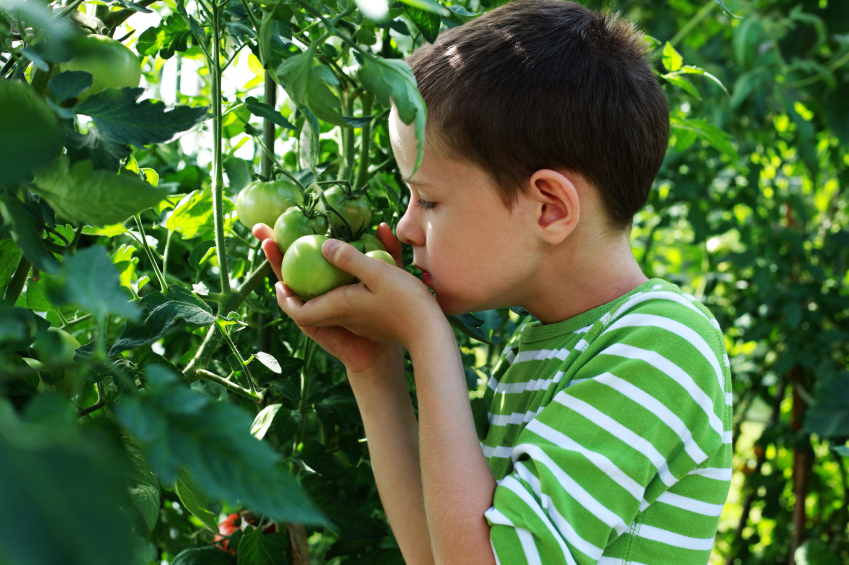
School gardens are a huge trend. They allow youth to build skills in science while encouraging healthy eating habits and getting youths to “eat their veggies.” The reality of most beginning garden programs is that just because it is grown in the garden, does not mean youth will eat it; many factors play a part in consumption. Data suggests that youth garden programs “increase the number of fruits and vegetables eaten, vegetable preferences, and fruit and vegetable asking behavior” (Heim, Stang, & Ireland, 2009),but this can sometimes be difficult. One of the biggest obstacles educators will face is how to get students to eat what they grow.
Focusing on consumption starts before the garden is in the ground. During the initial planning stages select a variety of vegetables based on the following principles:
- Allow students to assist in picking out some of the vegetables to grow
- Choose some vegetables that youth commonly eat
- Choose some vegetables that youth can identify but do not like to eat
- Choose some vegetables that youth have never seen or eaten
- Choose some vegetables that have a high success rate in growing (for examples of vegetables to grow, contact your local Cooperative Extension Office and speak with a Master Gardener or Horticulturist who can give the best local information on vegetables that grow best in your area)
Once the garden is growing and harvesting starts, the next key to consumption is engaging youth:
- Incorporate taste tests – cut up the vegetables and allow the students to sample each one. Ask them to rate their favorites based on a variety of factors: color, taste, shape, smell, texture.
- Understand why some don’t like a particular vegetable: a lot of times individuals don’t like a vegetable because of external factors such as shape or texture. Understanding these factors and allowing youth to express why they don’t like a vegetable can help them trust to try different and new vegetables in the future.
- Provide opportunities to cook with the vegetables. Cooking vegetables sometimes changes the texture and taste. At the same time, having youth prepare the vegetables and learn how to cook them will give them the opportunity to get more familiar with it and therefore be more likely to eat it in the future. The mystery of what to do with a certain vegetable is removed when they actually prepare it.
- Provide dipping sauces to encourage youth to try something different. The simplicity of having something to dip a vegetable in makes it more fun to eat it. If youth don’t like the taste of the vegetable the dip can mask the taste enough for youth to eat it.
- Keep trying: youth sometimes need to try a vegetable 8-12 times to become more familiar with it and actually eat it on their own. Studies have found that “of all the determinants, the availability and accessibility of fruit and vegetables and taste preferences were most consistently and most positively related to consumption …Multi-component school-based interventions that combined classroom curriculum, parent and food service components showed the greatest promise for fruits and vegetable promotion among children (Blanchette & Brug, 2005).”
In the end the success of getting students to eat vegetables will be based on practice, practice, practice. Of consumption that is. Offering the vegetables repeatedly and often is the best way to get them familiar and hungry for more.
For more school garden resources, click here!
Contributors
Vanessa Spero Swingle and Beth Shephard, University of Florida Extension
Sources
Blanchette, L. & Brug, J. “Determinants of Fruit and Vegetable Consumption Among 6-12-Year-Old Children and Effective Interventions to Increase Consumption.” Journal of Human Nutrition and Dietetics: The official Journal of the British Dietetic Association, 2005 Dec; 18(6):431-43.
Heim, S., Stang, J. & Ireland, M. “A garden pilot project enhances fruit and vegetable consumption among children.” Journal of the American Dietetic Association, 2009 Jul; 109(7):1220-6.
